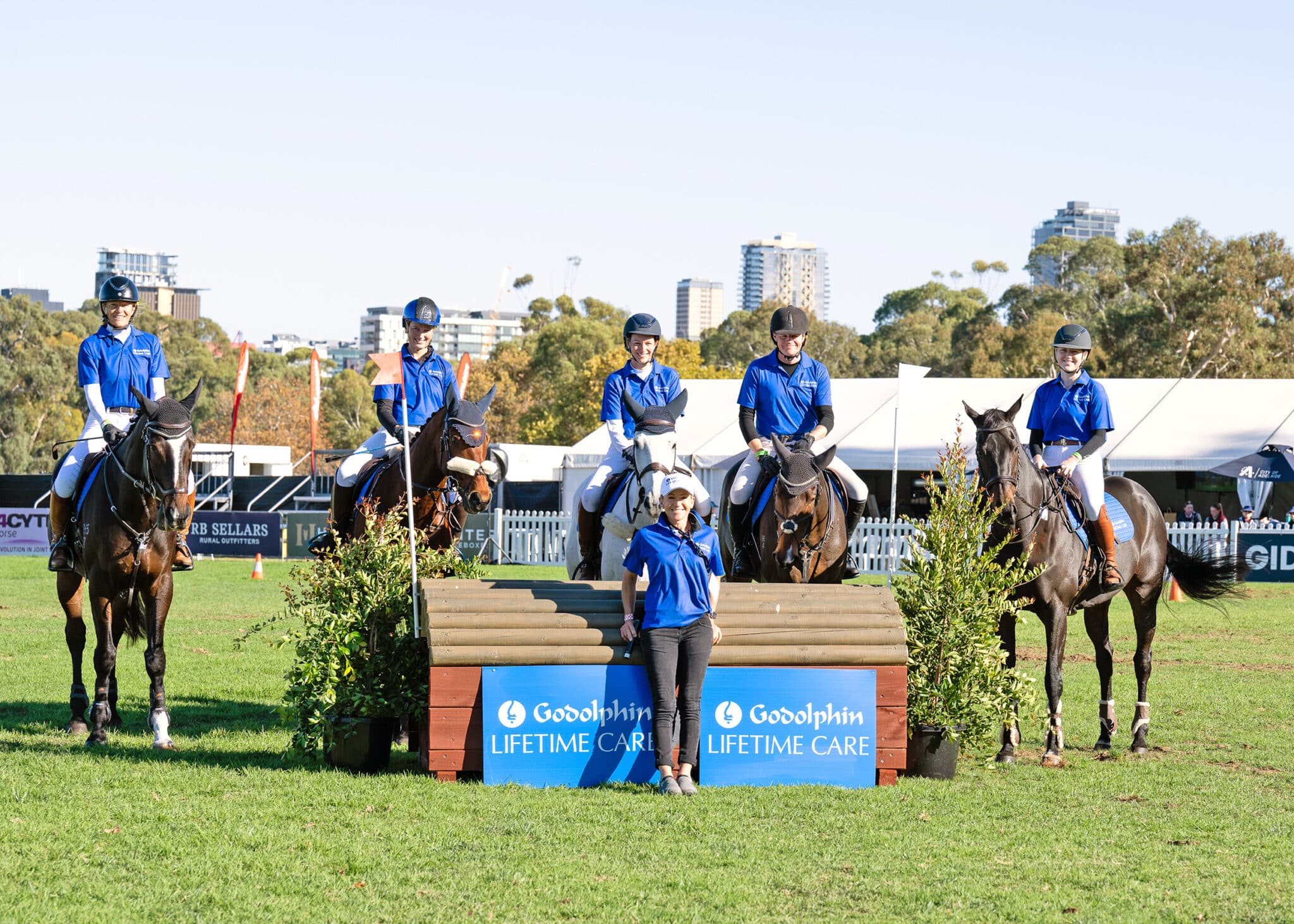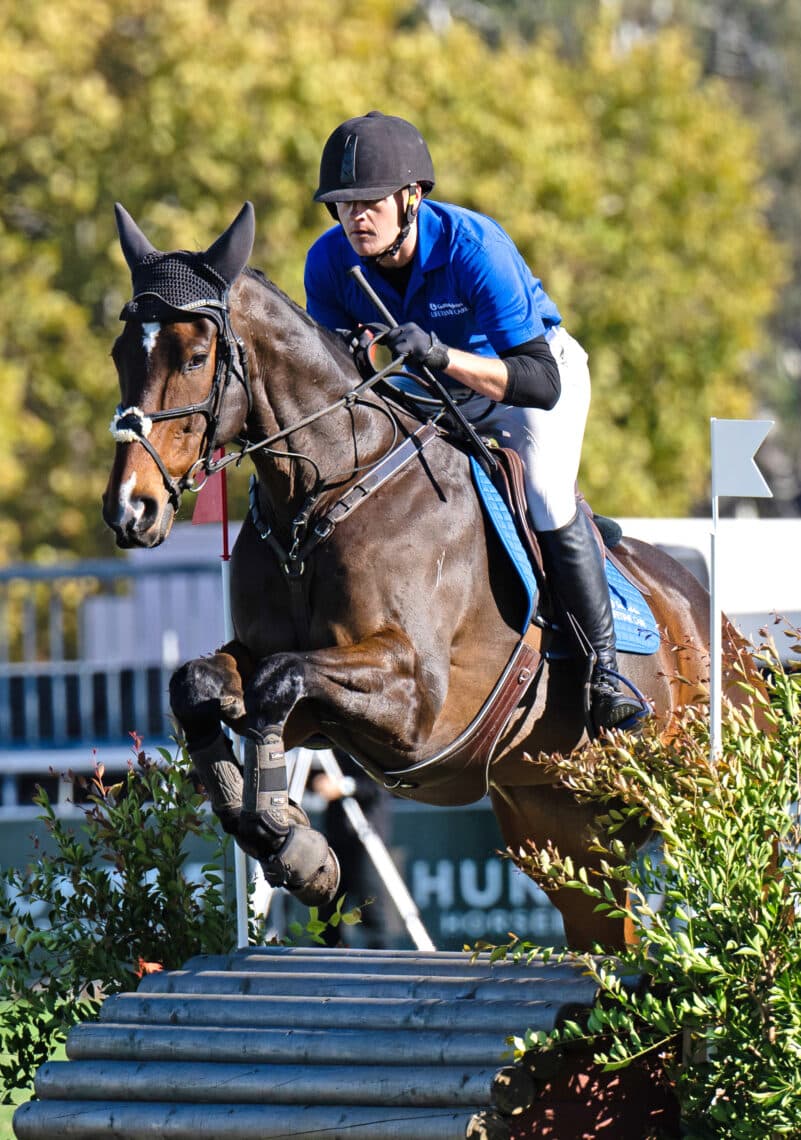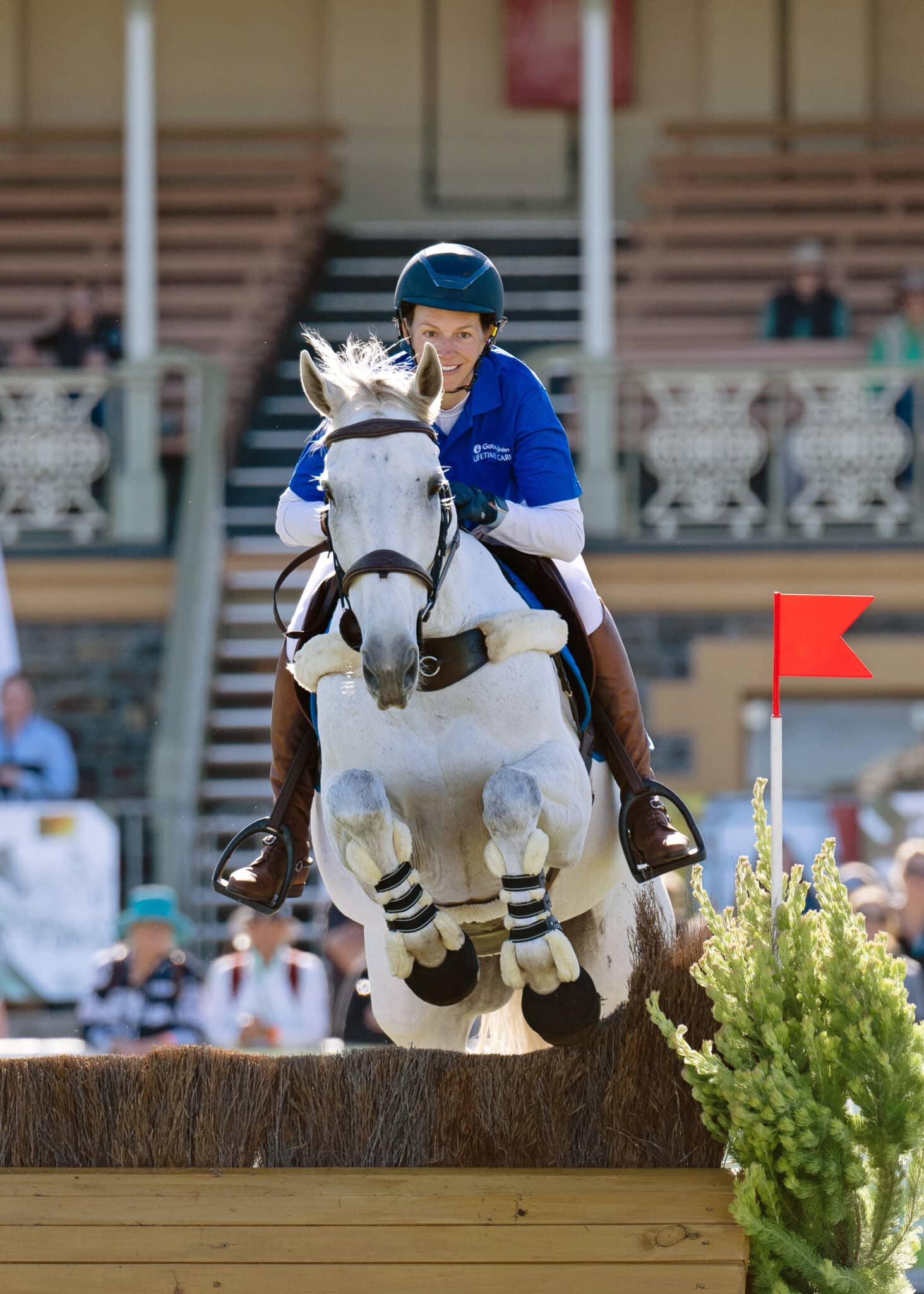
Adelaide’s cross country masterclass
Olympian AMANDA ROSS put five riders and their horses through their paces in an informative Godolphin sponsored cross country masterclass.

Off the track Thoroughbreds have become renowned for their versatility. They are well suited to most disciplines from dressage and show jumping, to recreational and therapy horses. Their intelligence, willingness and stamina also make them excellent eventers, as Shenae Lowings and her OTT Bold Venture proved when the pair took out the CCI4*-S at the 2024 Adelaide Equestrian Festival for the second year in a row.
But that wasn’t the only festival event in which OTT Thoroughbreds stood out from the crowd. This year, Godolphin (their excellent Lifetime Care program supports Godolphin-owned Thoroughbreds as they transition from the track into new lives after racing) sponsored a cross country masterclass, presented by Olympian Amanda Ross.
With the aim of showcasing the breed’s exceptional athleticism, trainability, and their suitability as eventers, the festival organisers had put out a call for rider and horse combinations to participate in the masterclass, on the understanding that the horses must be OTT Thoroughbreds competing at a minimum of 1* level. The five lucky participants chosen to benefit from Amanda’s wealth of cross country experience were Julie Bramucci and Rafiki Epic Deal, Charlie Germain and GE Orlando, Connie Miller on Delicato, Audrey Nicolai and Insidious Ghost, and Jaimie Stichel with Sun Quest.
One of Amanda’s main objectives during the 45-minute masterclass was to demonstrate how cross country training can be broken down in order to produce horses who are confident, brave, and know their job. She had devised three exercises that were first worked on separately before all three components were put together to form a course.
The class began with a warm up over a low crossrail at trot. “I think eventers need to learn to trot a fence well, because inadvertently we end up trotting cross country off big banks and you need to be very good at that, and at being able to keep your rhythm,” Amanda explains.

The first exercise was over two houses, both placed at an angle, three strides apart, and set up in such a way that they could be jumped individually: “We first jumped both fences separately so the horses could have a look at a cross country fence and jump one,” Amanda says. “We also talked about different stride lengths with different horses. The average stride is 12 feet, and as a rider you should know how near to true your horse’s canter stride is, and what you need to do to adjust it to make sure you can place the horse with the right length of stride and the right amount of power.”
The riders put together the three-stride exercise well, although there were a few examples of the horses chipping in a fourth stride.
The second exercise involved an apex (a skinny) with a rolltop and about seven strides on a curve. “There’s a formula for where you jump an apex and we talked about how to jump it a third to a quarter from the pointy end,” Amanda says. “We worked on keeping the rhythm with the stride length they needed approaching the first fence and maintaining that the whole way through the curve. I think we saw some really good examples of very smooth riding, which looks very efficient and takes less energy from the horse.”

A roll top with a hedge in the centre of the arena came in handy for the third exercise when Amanda created a combination fence by laying poles in front of it to simulate a ditch. “When you’re jumping a combination, the lower level horses don’t have the experience or the reaction time to respond quickly. You’ll see in the 5* that combinations are put very close together, so the horse has to stay on the line and read the fences really quickly, whereas in the lower levels there’ll be three or four strides between the combination so the horse has a little bit more time to react,” she explains.
Once the riders and horses were confidently negotiating the combination, it was time to put everything they’d learned together in a course, comprising the combination ditch and hedge, the rolltop apex, and the angled houses set three strides apart. “And that,” Amanda says, “was to show that once you’ve once learned the concepts of cross country, and understand the different types of fences and how to travel across country, then you have the ability to divide the course up and know how to ride each piece.”

Overall, Amanda was very pleased with the way the masterclass unfolded, saying that all the riders did very well, and that the horses were fantastic. “Each horse showed a willingness to work with a forward attitude, although they were all quite different. We had a shorter, more compact horse that was a little hotter. Then Julie’s horse who is bigger and rangier, and easily managed the six strides down to the apex, doing it beautifully because he covers more ground in a relaxed way. So, I think we successfully showcased that Thoroughbreds come in a lot of shapes and sizes, but they’re all willing to work and are self-propelled. You don’t have to push them; when you explain what you want them to do, nine times out of ten they’re really happy to do it for you.”
Amanda, who grew up learning to ride on Thoroughbreds, is a huge fan. “They feel like home to me,” she says. “Once they understand what you want, you don’t have to make them, they just take you. Some of my friends who usually ride Warmbloods have bought Thoroughbreds and can’t believe how willing, light and easy they are. I love them. I really like training them, and I like being part of the off the track movement.”
Most of the success that Amanda has enjoyed has been with Thoroughbreds. There was Otto, who took her to the Sydney Olympics, and Koko Popping Candy, her long-time eventing partner, now retired. Not surprisingly, next on Amanda’s agenda is to find another special horse: “I’d really like to find a super jumping Thoroughbred. Imagine if you could do a World Cup with a Thoroughbred. That would be amazing.”



